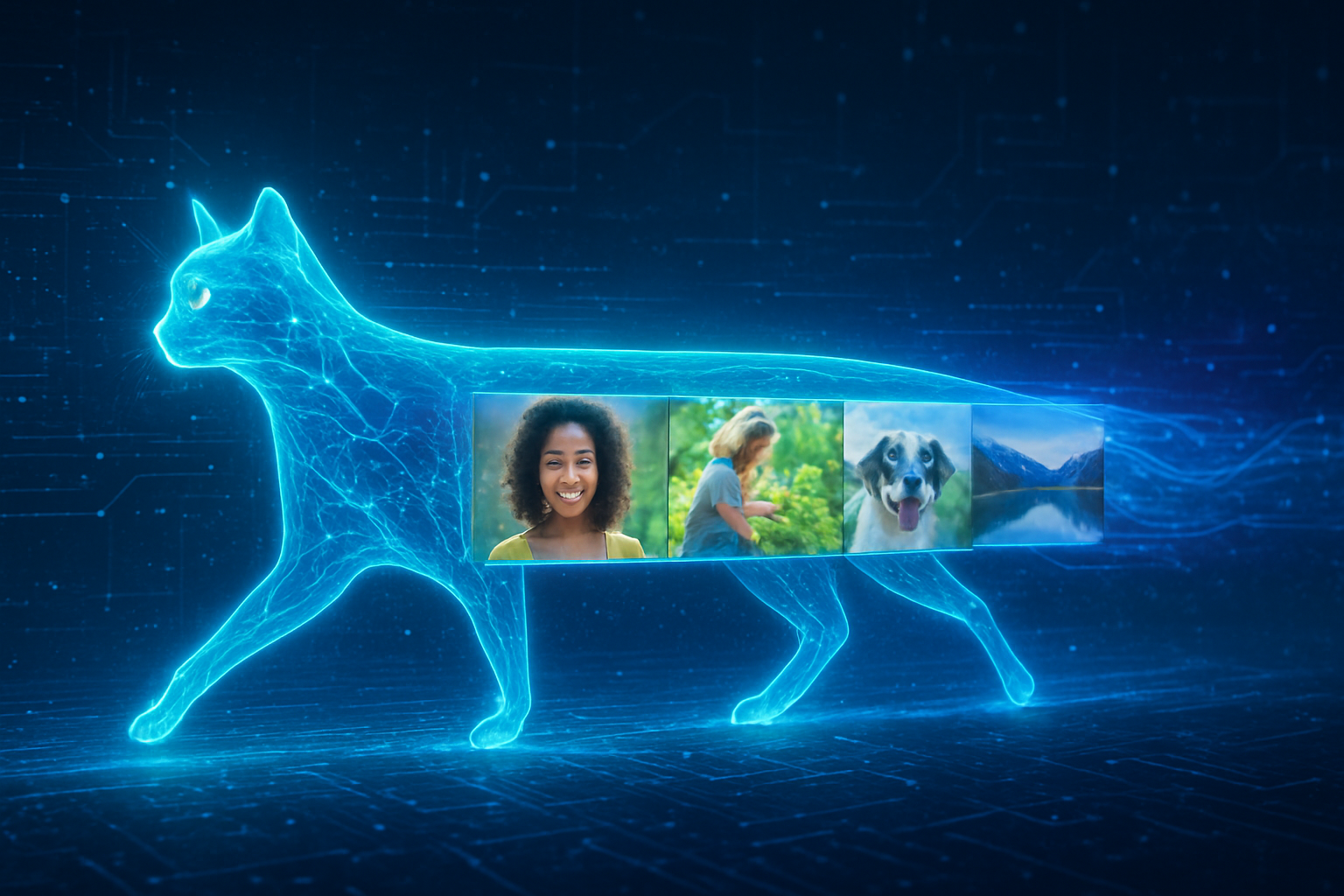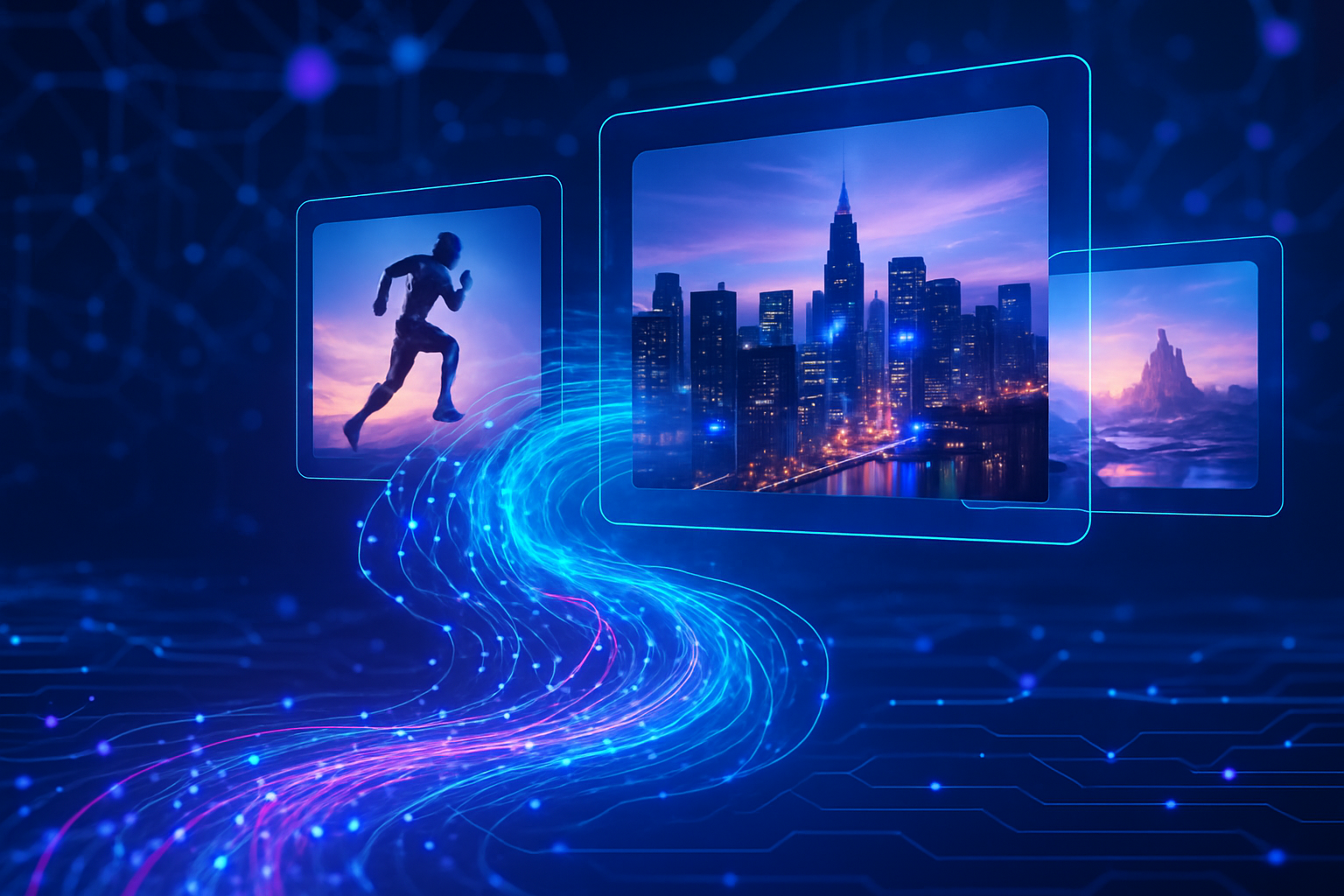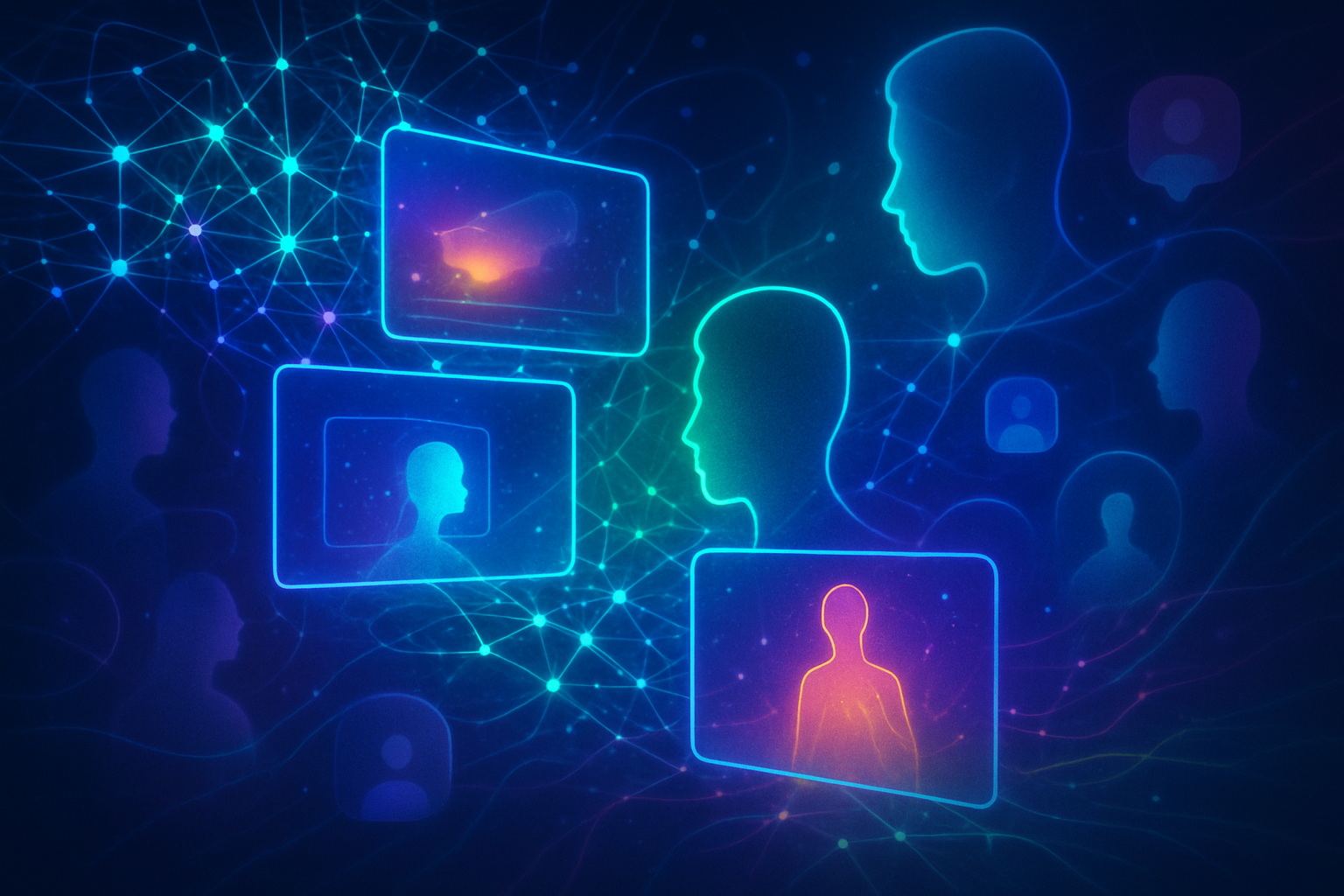In a move set to redefine the landscape of generative artificial intelligence, Apple (NASDAQ: AAPL) has unveiled its groundbreaking STARFlow and STARFlow-V models. Announced around December 2, 2025, these innovative AI systems represent a significant departure from the prevailing diffusion-based architectures that have dominated the field of image and video synthesis. By championing Normalizing Flows, Apple is not just entering the fiercely competitive generative AI space; it's challenging its very foundation, promising a future of more efficient, interpretable, and potentially on-device AI creativity.
This release signals Apple's deepening commitment to foundational AI research, positioning the tech giant as a serious innovator rather than a mere adopter. The immediate significance lies in the provision of a viable, high-performance alternative to diffusion models, potentially accelerating breakthroughs in areas where diffusion models face limitations, such as maintaining temporal coherence in long video sequences and enabling more efficient on-device processing.
Unpacking the Architecture: Normalizing Flows Take Center Stage
Apple's STARFlow and STARFlow-V models are built upon a novel Transformer Autoregressive Flow (TARFlow) architecture, marking a technical "curveball" in the generative AI arena. This approach stands in stark contrast to the iterative denoising process of traditional diffusion models, which currently power leading systems like OpenAI's Sora or Midjourney. Instead, Normalizing Flows learn a direct, invertible mapping to transform a simple probability distribution (like Gaussian noise) into a complex data distribution (like images or videos).
STARFlow, designed for image generation, boasts approximately 3 billion parameters. It operates in the latent space of pre-trained autoencoders, allowing for more efficient processing and a focus on broader image structure. While its native resolution is 256×256, it can achieve up to 512×512 with upsampling. Key features include reversible transformations for detailed editing, efficient processing, and the use of a T5-XL text encoder.
STARFlow-V, the larger 7-billion-parameter sibling, is tailored for video generation. It can generate 480p video at 16 frames per second (fps), producing 81-frame clips (around 5 seconds) with the capability to extend sequences up to 30 seconds. Its innovative two-level architecture features a Deep Autoregressive Block for global temporal reasoning across frames and Shallow Flow Blocks for refining local details. This design, combined with a 'video-aware Jacobi-Iteration' scheme, aims to enhance temporal consistency and reduce error accumulation, a common pitfall in other video generation methods. It supports multi-task generation including text-to-video (T2V), image-to-video (I2V), and video-to-video (V2V).
The core technical difference from diffusion models lies in this direct mapping: Normalizing Flows offer exact likelihood computation, providing a precise mathematical understanding of the generated data, which is often difficult with diffusion models. They also promise faster inference times due to generation in a single forward pass, rather than numerous iterative steps. Initial reactions from the AI research community are a mix of excitement for the innovative approach and cautious optimism regarding current resolution limitations. Many praise Apple's decision to open-source the code and weights on Hugging Face and GitHub, fostering broader research and development, despite restrictive commercial licensing.
Reshaping the AI Competitive Landscape: A Strategic Play by Apple
The introduction of STARFlow and STARFlow-V carries profound competitive implications for the entire AI industry, influencing tech giants and startups alike. Apple's (NASDAQ: AAPL) strategic embrace of Normalizing Flows challenges the status quo, compelling competitors to reassess their own generative AI strategies.
Companies like OpenAI (with Sora), Google (NASDAQ: GOOGL), Meta Platforms (NASDAQ: META), and Stability AI (Stable Diffusion) have heavily invested in diffusion models. Apple's move could force these players to diversify their research into alternative architectures or significantly enhance the efficiency and temporal coherence of their existing diffusion frameworks. STARFlow-V, in particular, directly intensifies competition in the burgeoning AI video generation space, potentially outperforming multi-stage diffusion models in aspects like temporal consistency. The promise of faster sampling and greater computational efficiency from STARFlow models puts pressure on all major players to deliver more efficient, real-time, and potentially on-device AI applications.
Apple itself stands as the primary beneficiary. These models reinforce its position as a serious contender in generative AI, supporting its long-term vision of deeply integrating AI into its ecosystem. Content creators and creative industries could also benefit significantly in the long term, gaining powerful new tools for accelerated production and hyper-realistic content synthesis. The open-sourcing, despite licensing caveats, is a boon for the wider AI research community, providing a new architectural paradigm for exploration.
Potential disruptions include a challenge to the market dominance of existing diffusion-based video generative AI tools, potentially necessitating a pivot from companies heavily invested in that technology. Furthermore, Apple's emphasis on on-device AI, bolstered by efficient models like STARFlow, could reduce reliance on cloud AI services for certain applications, especially where privacy and low latency are paramount. This shift could challenge the revenue models of cloud-centric AI providers. Apple's strategic advantage lies in its tightly integrated hardware, software, and services, allowing it to offer unique, privacy-centric generative AI experiences that competitors may struggle to replicate.
Wider Significance: A New Direction for Generative AI
Apple's STARFlow and STARFlow-V models are more than just new additions to the AI toolkit; they represent a pivotal moment in the broader AI landscape, signaling a potential diversification of foundational generative architectures. Their emergence challenges the monolithic dominance of diffusion models, proving that Normalizing Flows can scale to achieve state-of-the-art results in high-fidelity image and video synthesis. This could inspire a new wave of research into alternative, potentially more efficient and interpretable, generative paradigms.
The models align perfectly with Apple's (NASDAQ: AAPL) long-standing strategy of prioritizing on-device processing, user privacy, and seamless integration within its ecosystem. By developing efficient generative models that can run locally, Apple is enhancing its privacy-first approach to AI, which differentiates it from many cloud-centric competitors. This move also boosts Apple's credibility in the AI research community, attracting top talent and countering narratives of lagging in the AI race.
The potential societal and technological impacts are vast. In content creation and media, STARFlow-V could revolutionize workflows in film, advertising, and education by enabling hyper-realistic video generation and complex animation from simple text prompts. The efficiency gains could democratize access to high-end creative tools. However, these powerful capabilities also raise significant concerns. The high fidelity of generated content, particularly video, heightens the risk of deepfakes and the spread of misinformation, demanding robust safeguards and ethical guidelines. Biases embedded in training data could be amplified, leading to inequitable outputs. Furthermore, questions surrounding copyright and intellectual property for AI-generated works will become even more pressing.
Historically, Normalizing Flow models struggled to match the quality of diffusion models at scale. STARFlow and STARFlow-V represent a significant breakthrough by bridging this quality gap, re-validating Normalizing Flows as a competitive paradigm. While current commercial leaders like Google's (NASDAQ: GOOGL) Veo 3 or Runway's Gen-3 might still offer higher resolutions, Apple's models demonstrate the viability of Normalizing Flows for high-quality video generation, establishing a promising new research direction that emphasizes efficiency and interpretability.
The Road Ahead: Future Developments and Expert Predictions
The journey for Apple's (NASDAQ: AAPL) STARFlow and STARFlow-V models has just begun, with significant near-term and long-term developments anticipated. In the near term, the open-sourced nature of the models will foster community collaboration, potentially leading to rapid improvements in areas like hardware compatibility and resolution capabilities. While STARFlow-V currently generates 480p video, efforts will focus on achieving higher fidelity and longer sequences.
Long-term, STARFlow and STARFlow-V are poised to become foundational components for AI-driven content creation across Apple's ecosystem. Their compact size and efficiency make them ideal candidates for on-device deployment, enhancing privacy-focused applications and real-time augmented/virtual reality experiences. Experts predict these technologies will influence future versions of macOS, iOS, and Apple Silicon-optimized machine learning runtimes, further cementing Apple's independence from third-party AI providers. There's also speculation that the mathematical interpretability of normalizing flows could lead to "truth meters" for AI-generated content, a transformative development for fields requiring high fidelity and transparency.
Potential applications span entertainment (storyboarding, animation), automotive (driving simulations), advertising (personalized content), education, and even robotics. However, several challenges need addressing. Scaling to higher resolutions without compromising quality or efficiency remains a key technical hurdle. Crucially, the models are not yet explicitly optimized for Apple Silicon hardware; this optimization is vital to unlocking the full potential of these models on Apple devices. Ethical concerns around deepfakes and data bias will necessitate continuous development of safeguards and responsible deployment strategies.
Experts view this as a clear signal of Apple's deeper commitment to generative AI, moving beyond mere consumer-facing features. Apple's broader AI strategy, characterized by a differentiated approach prioritizing on-device intelligence, privacy-preserving architectures, and tight hardware-software integration, will likely see these models play a central role. Analysts anticipate a "restrained" and "cautious" rollout, emphasizing seamless integration and user benefit, rather than mere spectacle.
A New Chapter in AI: What to Watch For
Apple's (NASDAQ: AAPL) STARFlow and STARFlow-V models mark a strategic and technically sophisticated entry into the generative AI arena, prioritizing efficiency, interpretability, and on-device capabilities. This development is a significant milestone in AI history, challenging the prevailing architectural paradigms and re-establishing Normalizing Flows as a competitive and efficient approach for high-fidelity image and video synthesis.
The key takeaways are clear: Apple is serious about generative AI, it's pursuing a differentiated architectural path, and its open-source contribution (albeit with commercial licensing restrictions) aims to foster innovation and talent. The long-term impact could reshape how generative AI is developed and deployed, particularly within Apple's tightly integrated ecosystem, and influence the broader research community to explore diverse architectural approaches.
In the coming weeks and months, several critical aspects will be important to watch. Foremost among these are advancements in resolution and quality, as STARFlow's current 256×256 image cap and STARFlow-V's 480p video limit need to improve to compete with leading commercial solutions. Keep an eye out for Apple Silicon optimization updates, which are essential for unlocking the full potential of these models on Apple devices. The release of a publicly available, higher-quality video generation checkpoint for STARFlow-V will be crucial for widespread experimentation. Finally, watch for direct product integration announcements from Apple, potentially at future WWDC events, which will indicate how these powerful models will enhance user experiences in applications like Final Cut Pro, Photos, or future AR/VR platforms. The competitive responses from other AI giants will also be a key indicator of the broader industry shift.
This content is intended for informational purposes only and represents analysis of current AI developments.
TokenRing AI delivers enterprise-grade solutions for multi-agent AI workflow orchestration, AI-powered development tools, and seamless remote collaboration platforms.
For more information, visit https://www.tokenring.ai/.



